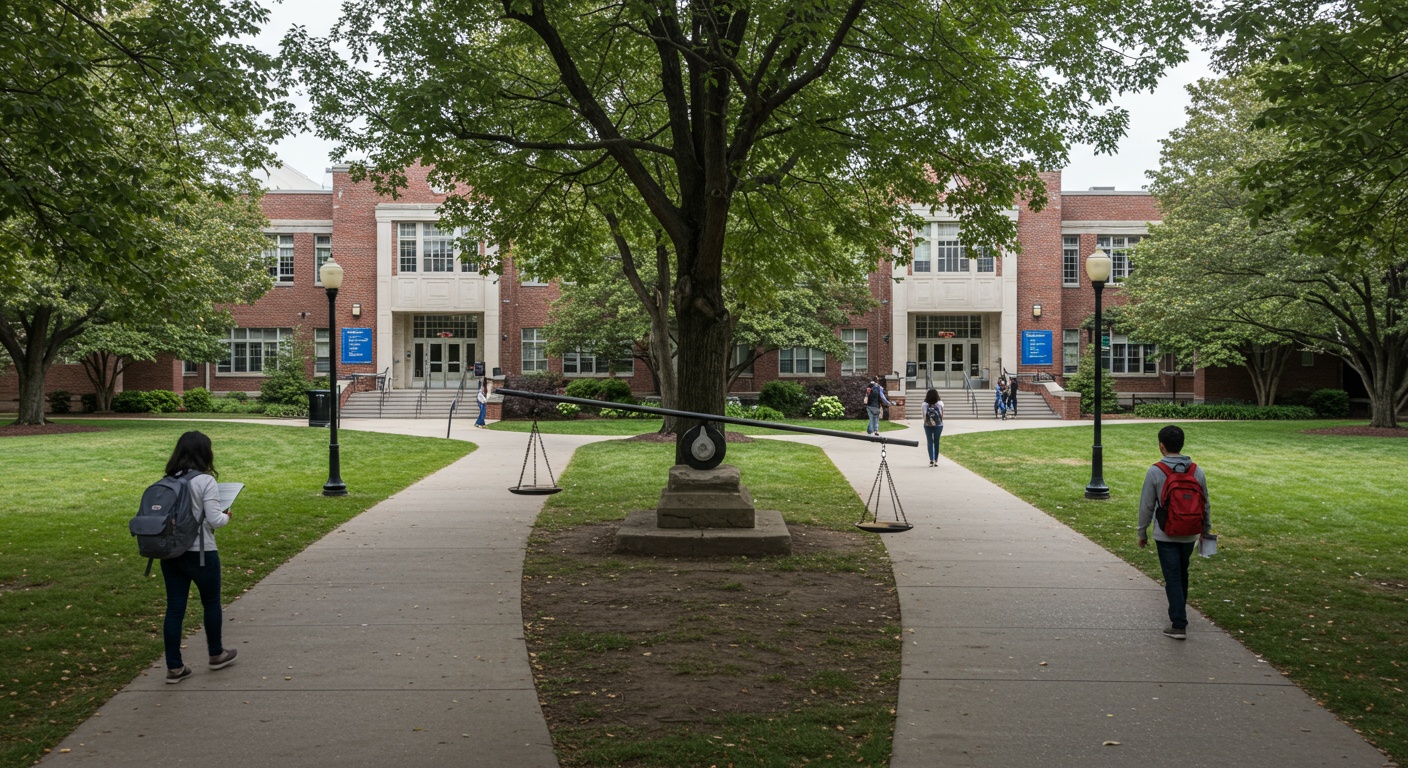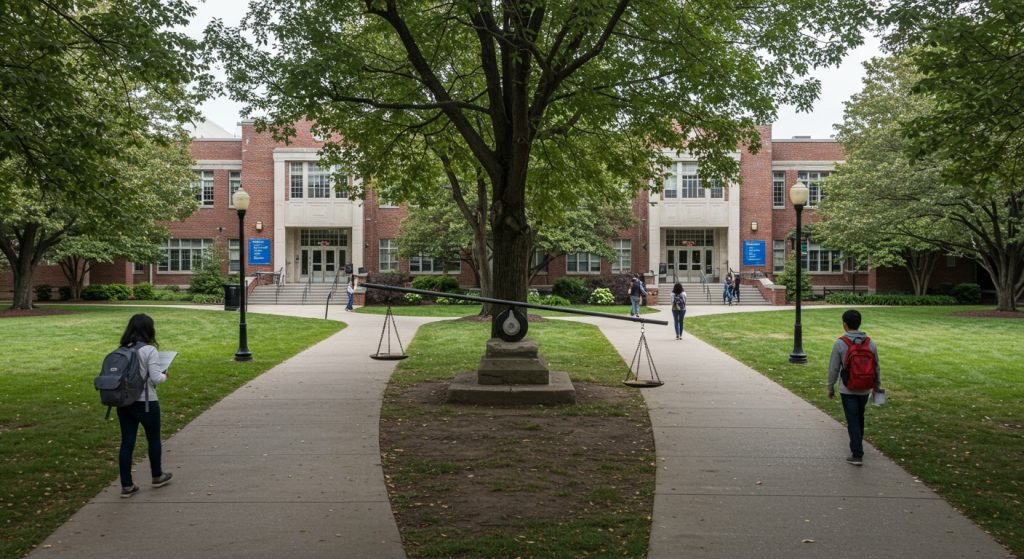The landscape of university admissions has significantly evolved, presenting applicants with distinct strategic pathways beyond the conventional. Direct admission, often observed in specialized fields or through early assurance programs for high-achieving pre-university students, offers streamlined entry based on specific academic milestones or targeted partnerships. Conversely, the regular admission cycle emphasizes a holistic review, incorporating detailed essays, diverse extracurricular portfolios. Navigating the prevalent test-optional trends reshaping applications globally. Grasping the nuances of each route, from their unique timelines to varying criteria, becomes paramount for prospective undergraduates seeking optimal fit and competitive advantage in an increasingly selective educational environment.

Understanding University Admission Routes: An Overview
Navigating the path to higher education can feel like deciphering a complex map. For many aspiring university students, the primary fork in this road involves choosing between what are broadly known as ‘Direct Admission’ and ‘Regular Admission’ routes. While both ultimately lead to a university spot, they differ significantly in their processes, timelines. The types of students they best serve. Understanding these distinctions is crucial for making an informed decision that aligns with your academic profile, career aspirations. Personal preferences.
At its core, university admission is about matching qualified students with available programs. The methods by which universities assess and accept students have evolved, offering more flexibility and specialized pathways than ever before. Let’s break down these two primary approaches.
What is Regular Admission?
Regular Admission, often considered the traditional or standard pathway, is the most common method for applying to universities. This route typically involves a comprehensive application process where students submit their academic records, standardized test scores (if required), essays, letters of recommendation. Extracurricular activity lists by a specified deadline. Universities then review all applications holistically during a set period and release decisions simultaneously.
- Broad Eligibility
- Standardized Evaluation
- Common Application Platforms
- Timeline
Generally open to a wide range of applicants, primarily high school students applying for their first undergraduate degree.
Emphasizes academic performance (GPA, coursework rigor), standardized test scores (e. G. , SAT, ACT, IELTS, TOEFL). A holistic review of essays and recommendations.
Many countries and institutions utilize centralized platforms (e. G. , UCAS in the UK, Common App in the US, various national portals) that streamline the application process for multiple universities.
Applications are usually submitted in the fall or winter, with decisions released in the spring, allowing students several months to consider offers before the enrollment deadline in late spring or early summer.
For instance, Sarah, a high school senior, decided to apply to five different universities through a common application portal. She spent months perfecting her personal statement, gathering teacher recommendations. Ensuring her transcripts were sent. She submitted all her applications by January and received her decisions in March and April, giving her ample time to compare offers and make her final choice.
What is Direct Admission?
Direct Admission, sometimes referred to as ‘guaranteed admission,’ ‘early admission,’ ‘talent-based admission,’ or ‘program-specific admission,’ offers a more streamlined or specialized pathway into a university or a specific program. Unlike regular admission, which often involves a competitive review against a large pool of applicants, Direct Admission Options typically hinge on meeting predefined, often higher, academic criteria or demonstrating exceptional talent in a specific area.
Direct admission can manifest in several forms:
- Criterion-Based Admission
- Program-Specific Direct Entry
- Early Decision/Early Action
- Talent-Based/Portfolio Admission
- Mature Student/Special Entry Schemes
Some universities offer direct admission if an applicant meets a certain GPA, standardized test score, or specific course requirements. For example, a university might state that any applicant with an unweighted GPA of 3. 8 or higher and an SAT score above 1400 is guaranteed admission to a general faculty.
Certain highly specialized or competitive programs (e. G. , medical, engineering, fine arts, music conservatories) might have their own direct admission routes based on specific prerequisites, auditions, portfolios, or interviews, bypassing the general university application process to some extent.
These are variations of direct admission in the sense that they offer an expedited decision. Early Decision is binding (you commit to attending if accepted), while Early Action is non-binding. Students applying this way often receive decisions much earlier than regular applicants.
For fields like art, music, or drama, direct admission might be granted based on a strong portfolio, successful audition, or demonstration of exceptional skill, often alongside meeting minimum academic standards.
Some universities offer direct pathways for non-traditional students, based on work experience, specific vocational qualifications, or completion of preparatory courses, rather than solely on high school transcripts.
Consider David, an aspiring musician. Instead of applying through the general university portal, he applied directly to the university’s music conservatory. His application focused heavily on his audition tape, performance resume. A specialized interview, alongside his academic transcripts. He received an acceptance offer to the conservatory much earlier than his peers applying through regular admission.
Direct vs. Regular Admission: A Balanced Comparison
To help you weigh your options, here’s a detailed comparison of the two admission routes:
| Feature | Regular Admission | Direct Admission |
|---|---|---|
| Application Process | Comprehensive, holistic review of academic records, essays, recommendations, extracurriculars. Often through common application platforms. | Streamlined, often based on meeting specific academic thresholds, submitting a specialized portfolio/audition, or applying to a specific program. |
| Eligibility Criteria | Broad, general requirements. Focus on overall high school performance and potential. | Specific, often higher academic thresholds (GPA, test scores) OR specialized criteria (portfolio, audition, specific program prerequisites). |
| Timeline | Later submission deadlines (fall/winter), with decisions released in spring. More time for application preparation. | Earlier submission deadlines (often fall), with earlier decisions (fall/winter). Can be binding (Early Decision) or non-binding (Early Action). |
| Competitiveness | Highly competitive, especially for top-tier universities. Review against a large pool of diverse applicants. | Can be less competitive for meeting specific criteria, or highly competitive for specialized programs (e. G. , medical schools with direct entry). Offers a clear path if criteria are met. |
| Flexibility & Choice | More flexibility to apply to multiple institutions and compare offers before committing. Allows for exploration of different programs. | Less flexibility, as it often involves committing early or applying to a very specific program. May limit options for comparing multiple university offers. |
| Ideal Candidate | Students seeking a broad range of options, those needing more time to improve their profile, or those exploring different fields of study. | Students with exceptional academic records or specialized talents, those with a clear program/university choice, or those who benefit from early certainty. |
| Certainty of Outcome | Less certainty until decision release date. | Higher certainty if specific criteria are met, especially for criterion-based direct admission or Early Decision. |
Real-World Applications and Strategic Considerations
Choosing between direct and regular admission isn’t just about the process; it’s about strategic planning for your future. Here are some scenarios and actionable takeaways:
- For the High Achiever with a Clear Vision
- For the Specialized Talent
- For the Explorer and the Strategist
- Leveraging Direct Admission for Peace of Mind
- Understanding the Binding Nature
If you have consistently strong grades, high standardized test scores. A clear idea of the university and program you want, exploring Direct Admission Options, particularly Early Action or criterion-based direct entry, could be highly beneficial. It provides early certainty, reduces application stress. Allows you to focus on your senior year. For instance, a student with a perfect GPA and a passion for computer science might apply directly to a top engineering program’s direct entry stream, if available.
If your strength lies in a specific artistic, athletic, or academic field (e. G. , music, drama, specific sciences), direct admission through auditions, portfolios, or specialized interviews might be your strongest path. Universities often reserve spots for such talents, making the process more focused on your unique abilities.
If you’re still weighing your options, want to compare financial aid packages from multiple institutions, or need more time to refine your application materials, the Regular Admission route offers the flexibility you need. This allows you to apply to a diverse range of schools and make a decision based on all available details. Many students find peace of mind in having multiple options to choose from.
Even if you plan to apply broadly via regular admission, consider applying to one “safety” school through a direct admission pathway if you meet their criteria. This can provide a valuable backup plan and reduce anxiety during the waiting period for regular decisions.
Be extremely cautious with Early Decision (a common direct admission variant). This is a binding agreement. Only choose this if you are 100% certain that institution is your top choice, regardless of financial aid or other offers. A personal anecdote from a former student, Maria, highlights this: she applied Early Decision to her dream school, got in. Then realized the financial aid package wasn’t what she hoped for. Because of the binding agreement, she had limited recourse, causing significant stress.
Ultimately, the “best” route is the one that aligns with your individual circumstances, academic strengths. Future aspirations. Research each university’s specific policies thoroughly. Don’t hesitate to contact their admissions offices for clarification. A well-informed choice today sets the foundation for a successful academic journey tomorrow.
Conclusion
Navigating university admissions, whether through direct or regular routes, is less about finding a single “best” path and more about discovering the one that amplifies your unique strengths. Current trends increasingly show universities embracing holistic reviews, valuing diverse profiles beyond just exam scores. For instance, a direct route might be ideal if you possess a strong portfolio for design programs or specific project experience for engineering, allowing you to showcase passion proactively. Conversely, the regular route provides ample time to refine your academic profile and craft compelling essays, demonstrating consistent growth. My personal tip is to research each university’s specific requirements meticulously; some institutions now offer early decision programs that can be advantageous if you’re certain about your top choice, similar to a direct pathway. Don’t be afraid to leverage recent developments like virtual open days to gauge the best fit for your aspirations. Ultimately, your journey into higher education is a deeply personal one. Choose the route that genuinely allows you to shine, aligning with your timeline and how you best present your potential. Believe in your unique story; it’s your most powerful application tool.
More Articles
Career Focused: Choosing the Right State University for Your Future Goals
Ace Your Application: State University Requirements You Must Know for 2025
Exam Success: Proven Strategies for Preparing for State University Entrance Exams
Find Your Path: How to Choose a College Major That Fits You
FAQs
What’s the main difference between direct and regular university admission?
Direct admission typically applies to students coming straight from high school or an equivalent pre-university program, using their final academic results for entry. Regular admission, on the other hand, often covers a broader range of applicants, including those with diplomas, foundation year certificates, or even transfer students from other institutions. It’s really about where you’re coming from academically when you apply.
Who typically goes for the direct admission route?
Direct admission is most common for students who have just completed their high school education or a similar pre-university qualification (like A-levels or IB) and are looking to enter university immediately. They usually have strong academic records that meet the direct entry requirements for their desired programs.
Are the academic requirements the same for both routes?
Not always. While both require a good academic foundation, direct admission often focuses heavily on specific subject grades from your high school leaving certificate. Regular admission might consider a wider range of qualifications, such as a polytechnic diploma GPA, performance in a foundation program, or even relevant work experience, alongside certain prerequisite courses.
Is one application process simpler than the other?
Generally, direct admission can feel more straightforward as it primarily relies on your high school transcripts and possibly standardized test scores. Regular admission, especially for transfers or mature students, might involve evaluating a more diverse set of qualifications, potentially requiring more detailed portfolios, essays, or interviews to assess your readiness.
Do direct and regular admissions offer the same range of courses?
Yes, absolutely! Both admission routes ultimately lead to the exact same degree programs and courses. The difference isn’t in what you’ll study or the degree you’ll earn. Rather the specific entry criteria and pathways you take to get into those programs in the first place. Once admitted, students from both routes are on equal footing academically.
How do I figure out which admission path is best for me?
The best path really depends on your current academic qualifications, your educational background. Your career aspirations. If you’re fresh out of high school with strong grades, direct admission is likely your primary option. If you’ve completed a diploma, a foundation course, or have other qualifications, then the regular admission route, which might include specific transfer pathways, would be more suitable. Always check the specific university’s requirements for clarity.
Are there any downsides to choosing one route over the other?
There aren’t really ‘downsides’ in a negative sense. More like different considerations. Direct admission means a faster transition from high school to university. Might have higher academic cut-offs. Regular admission might offer more flexibility for those with diverse backgrounds or who need a bridge program. Could involve a slightly longer overall educational journey to reach a degree. The ‘best’ route is simply the one that aligns with your qualifications and timeline.



